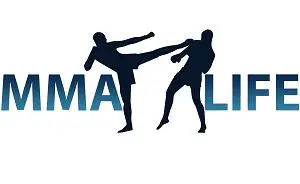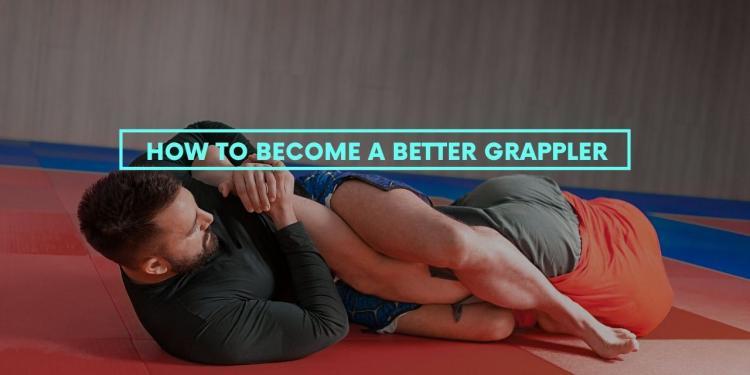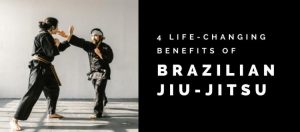In order to dominate in all aspects of grappling, you must be able to adapt to any situation that present itself. Whether you are attempting to take the opponent to the ground or apply a submission technique, having a well-rounded grappling background can give you a unique advantage over practitioners specializing in one style.
This article will go into detail on how you can become a better grappler by integrating techniques, concepts and strategies from jiu jitsu, judo, and wrestling. To push yourself to be the best grappler you can be, approach these styles with an open mind and not limit yourself to the rules dictated by each martial arts. In addition to that, test the tips below against teammates of all sizes and skills to learn the intricacy needed to adjust for each type of individual.
Gi vs. No-Gi
Before breaking down the different grappling martial arts, this section will explain the benefits received by individuals training in both the gi and no-gi. “Gi” refers to the uniform worn by martial arts like jiu jitsu and judo. This uniform consists of a thick long sleeve top, long pants and a belt that signifies your ranking. While no-gi simply means to train without this uniform requirement. The following will describes the benefits received from training in both gi and no-gi.
Gi Training
Training with a gi exposes you to a whole new world of techniques not available without it. Being able to grip the gi’s jacket and pants allows for additional grip controls, takedown techniques and even submissions. Due to the friction and the various grips available, sparring jiu jitsu with a gi occurs at a much slower pace and requires more of a methodical approach to successfully pull off techniques. The greatest benefit of training with a gi for submission grappling is that it improves your survival skills, especially for escaping submissions attempts. Unlike sparring in no-gi, you cannot rely on your athleticism and use explosive movements to slip out of submissions like armbars. Therefore, you have to learn to be technical in breaking grips and use the appropriate sequence of movements needed to get out of the submission hold.
No-gi Training
Training strictly in Gi will make your transitions to no-gi sparring or mix martial arts (MMA) difficult in certain aspects. For example, you might have built the habit of being too dependent on gi grips and try to grasp for grips not available in no-gi sparring. Since there is less friction and clothing to control the opponent, you are required to be quicker in scrambles and learn how to control the opponents with alternative grips. As a result, training in no-gi will enhance your ability to spar faster, have quicker reflex to subtle movements and be able to handle opponents with superior athleticism. Additionally, it will tighten up your offensive skills since there is a smaller margin of error for no-gi submission attempts. No-gi techniques and grips can also be used in gi training sessions, but not vice versa.

Style Matchups
This portion of the article will describe how a grappler from one of the three previously mentioned martial arts (jiu jitsu, judo and wrestling) can benefit from cross training with another grappling style.
Wrestling vs. Judo
Wrestling
-
Effect of Rules Change – In 2013, the International Judo Federation completely prohibited their athletes from touching their opponent’s leg during takedown attempts, which phased out many takedown techniques at Judo academies.
-
Wrestling Shots and Takedowns – Due to the rules mentioned above, those judo practitioners who wants to be a well-rounded takedown artist should take the time to learn wrestling techniques like shooting for a double leg or obtaining a high crotch takedown, which were legal previously.
Below is a video of a judoka successfully taking down his opponent and winning the match with a double leg takedown. Of course, this event occurred before the leg grabbing penalty was put in place. You can watch the rest of the video and see how many times the two judoka use wrestling movements in an attempt to take down their opponent.
- Wrestling Pins – In addition to winning a match with a successful takedown, judoka can also win their match by keeping their opponent’s back to the mat for 20 seconds. Wrestlers have fantastic ways to break the opponent down and pin them with powerful techniques. Try integrating various wrestling pins with your current judo knowledge to maximize your ability to generate pressure and control your opponent on the ground.
Judo
-
Balance and Sense of Timing – An experienced judoka normally develops an exceptional skill for off-balancing their opponent before rapidly following up with a sequence of movements needed to complete their takedown. Those individuals with wrestling experience can work on judo flow drills to enhance their ability to teeter their teammates off balance and build that sense of timing for following through with a takedown.
-
Foot Sweeps and Throws – Judo stand up techniques commonly used in competition like foot sweeps and throws would make great additions to a wrestler’s skillset.
-
Translating Judo to Wrestling – An Olympic medalist named Jason Morris has demonstrated the ability to adapt judo techniques and tactics to take down wrestlers in their own competitions, which is shown in his highlight video below. It is not simply excelling at Judo that makes Jason successful, he also understand wrestling concepts and techniques in-depth in order to counter it.
Wrestling vs. Jiu Jitsu
Wrestling
-
Takedowns – The most underdeveloped skills of most jiu jitsu practitioners are their takedown ability. Wrestling has a strong fundamental base that would help them improve in this particular area. Furthermore, you could practice wrestling takedowns that puts you right into a dominant position like side control, instead of simply taking the opponent down and having to start initiating the guard pass sequence.
-
Answer to Troublesome Jiu Jitsu Practitioners – There are people out there who have unique attributes that gives them a natural advantage over their peers. For example, some people have crazy flexible body and legs that allows them to regain guard from inferior positions, such as the bottom of side control or mount. Another problem that you might run into are those pesky teammates that use the inverted guard position and frustrate you with it. Wrestling pin and control techniques would do wonders for your ground game. For instance, the cradle technique is great for dealing with the flexible teammates and those using the inverted guard.
One type of cradle technique could be seen in the following video. Check out the end result and see how the cradle is one option for countering flexible people and inverted guard practitioners.
Jiu Jitsu
-
Submission Openings During Takedown Attempts – Wrestlers new to submission grappling are not mindful of the different ways they can be submitted during their takedown attempts. Therefore, training in jiu jitsu will make them more knowledgeable and aware of this danger, which helps them adjust accordingly.
-
Leg Entanglement Counters – Many wrestlers learn to break their opponent down from the turtle position and use various leg entanglements techniques to turn the opponent’s back towards the mat and pin them there. Learning to master various guard positions like half guards or 50/50 guards would be beneficial to reversing and escaping these leg entanglement scenarios.
-
Side Control Escape – Wrestlers are aggressive in getting their backs off the mat and use a lot of explosive movements in order to get up. Incorporating side control escape techniques from jiu jitsu will allow wrestlers to be technical as well as explosive in their escape.
Judo vs. Jiu Jitsu
Judo
-
Employing Judo Stand Up Techniques – In a competition setting, Jiu Jitsu practitioners tend to start the match by either immediately pulling guard or grip fighting with their opponent. For the latter scenario, learning judo would be extremely beneficial because you would know how to use the opponent’s grips against them and setup them up for various takedowns.
-
Judo Pressure and Control – Since pinning the opponent’s back to the mats is a viable option for winning, judo specializes in an assortment of ground techniques that are not commonly used by jiu jitsu practitioners, such as kesa gatame or unorthodox pins from the north south position.
-
Kesa Gatame – The video below shows grip and positional variations of the kesa gatame and their effectiveness in competition.
Jiu Jitsu
-
Back Control Attacks – During competition, a judoka will turtle up to avoid getting their back pinned to the mats and stall long enough for the referee to bring both competitors back up on to their feet. A judoka training jiu jitsu will gain additional submission techniques for attacking a turtled opponent. Furthermore, it will remove this bad habit of turtling up in submission grappling scenarios.
-
Overall Groundwork Skills – Since most judo dojos have a majority of their curriculum concentrated on throwing techniques, a judoka can evolve their ground game by training jiu jitsu. Jiu jitsu will teach each judoka how to maximize the use of their frame and leverage while grappling on the ground.




